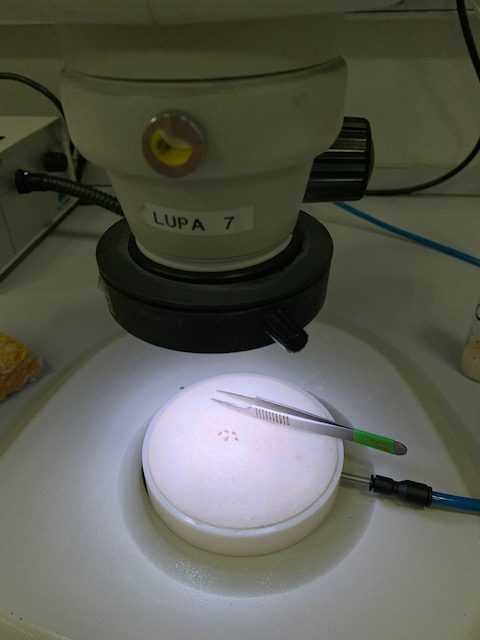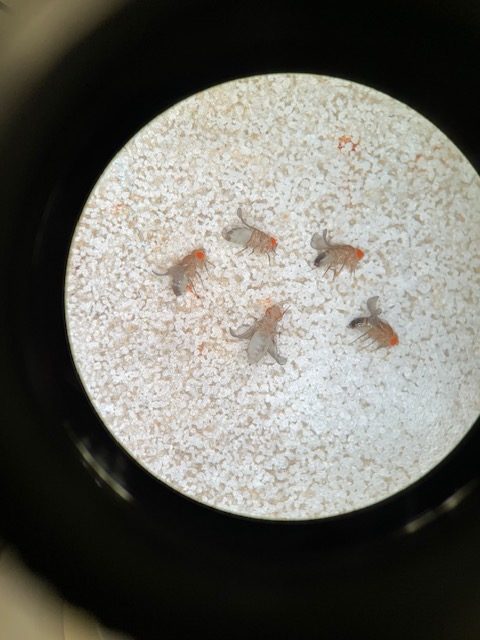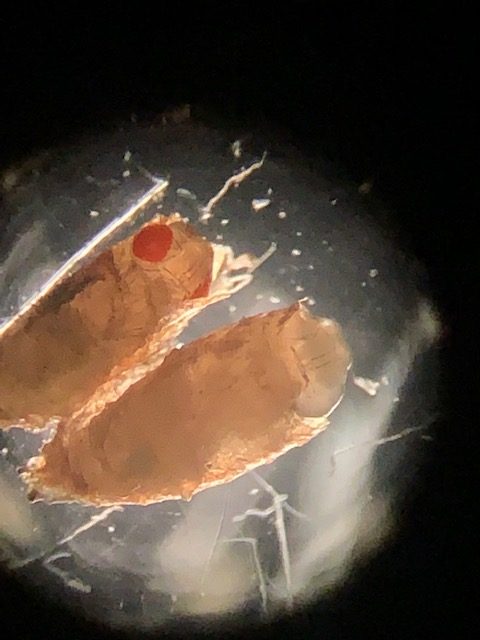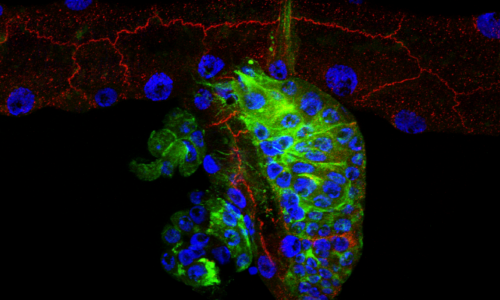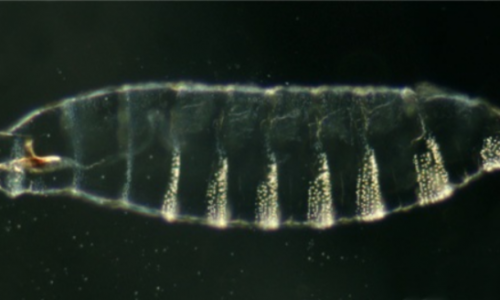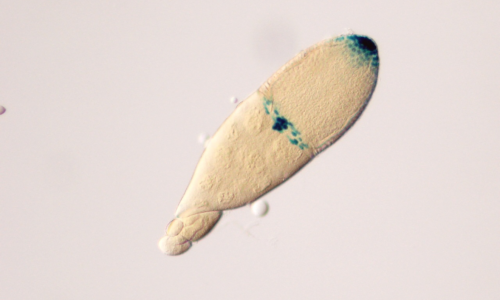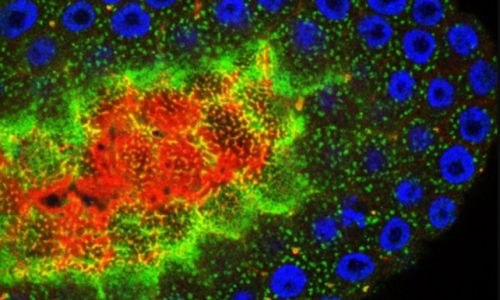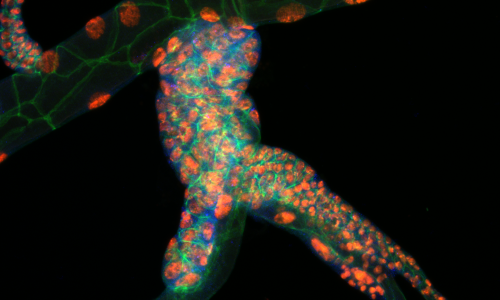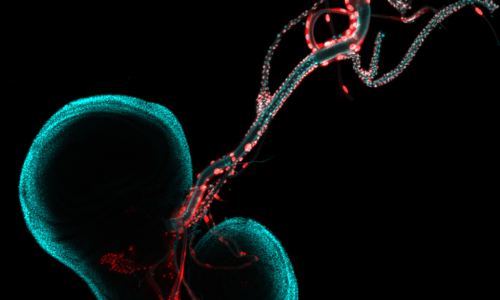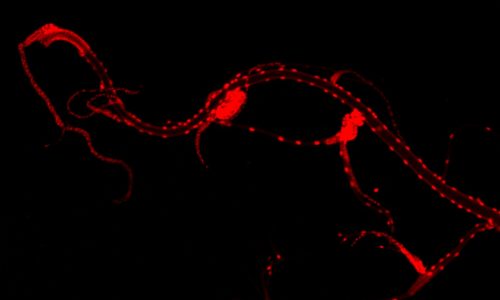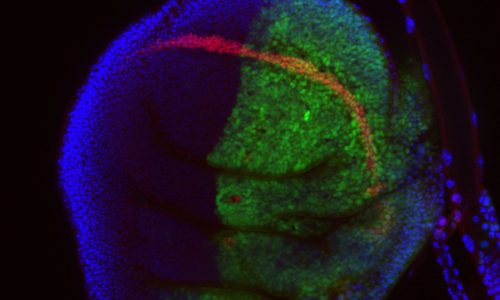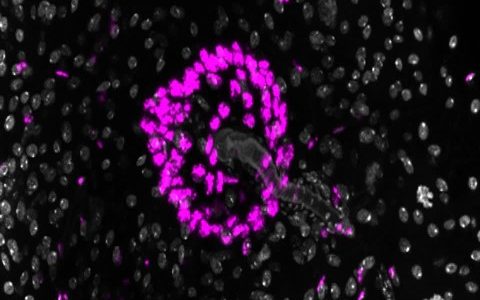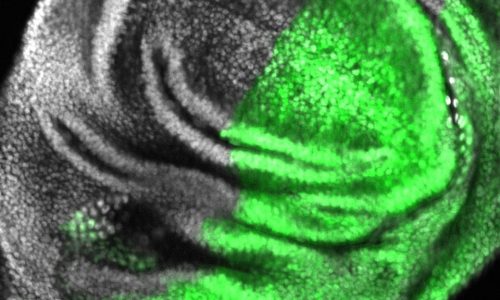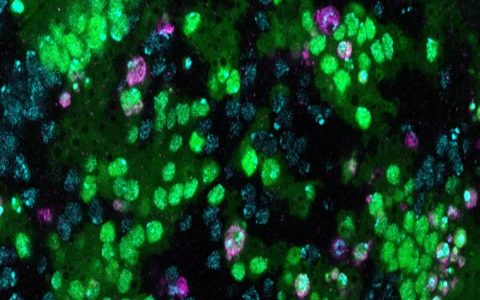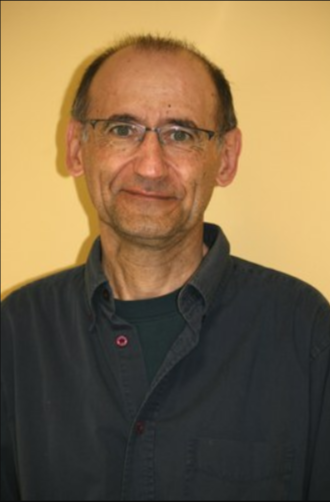Lab presentation
The work of many laboratories has allowed beginning to understand the genetic logic behind development.
However, while genes operate in cells and cells are the constituent units that contribute to morphogenesis of organs and of the whole organism, we are still trying to understand how the genetic information that impinges on cell behaviour allows for changes in individual cells that sum up to generate organs. To address this issue, studies need to be done in vivo and in the context of the whole organism.
Drosophila’s developmental cycle provides a unique context to study basic mechanisms of progenitor cell biology. In a holometabolous insect where the stage of metamorphosis will result in dramatic reconstruction of the juvenile tissues, massive cell death and extreme mechanical tensions, specific groups of progenitor cells are able to survive and give rise to the terminally differentiated adult structures.
The exact mechanisms that these cells use to avoid environmental and intrinsic death stimuli and respond in a coordinated manner to the signals for their terminal differentiation, remain largely unexplored and are of great relevance for the field of stem cell biology.
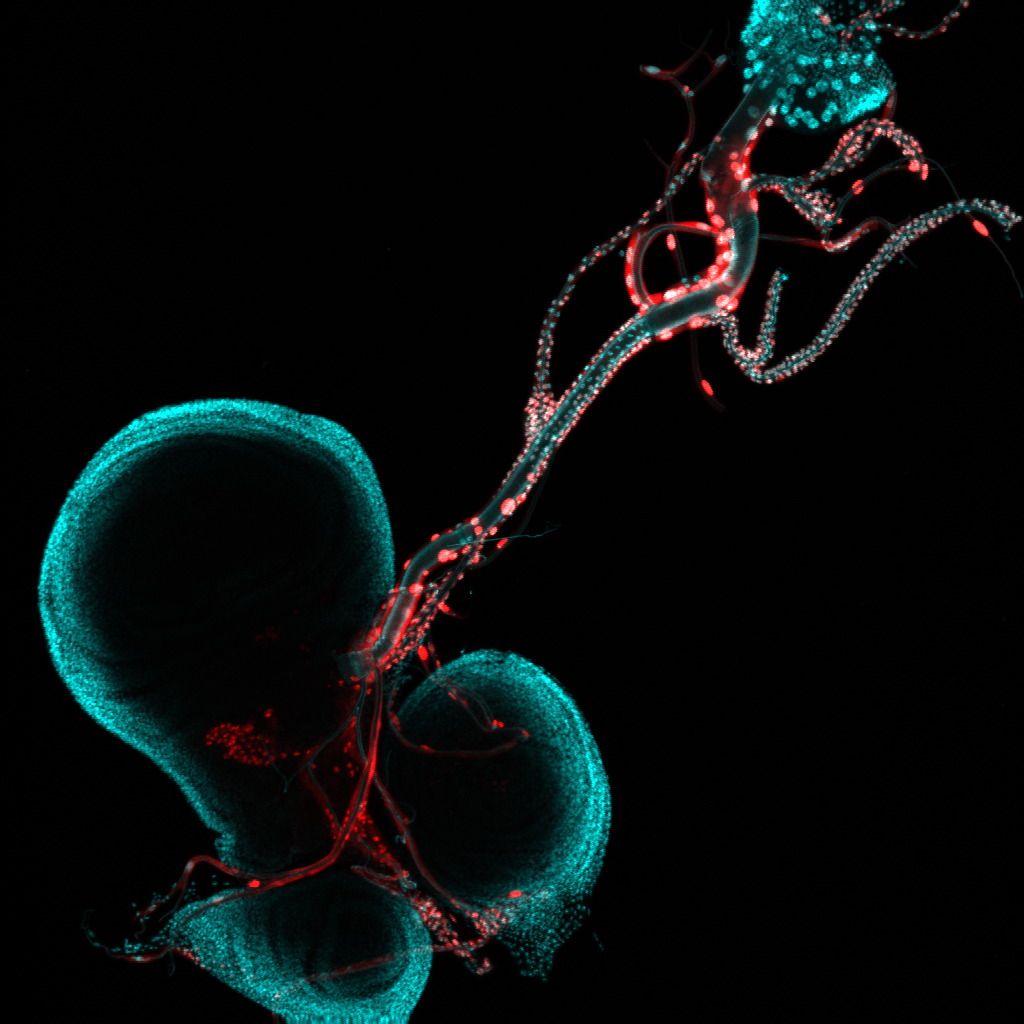
Projects
Our lines of scientific work are:
Spatial and temporal triggers taking tracheal adult precursors from quiescence into proliferation
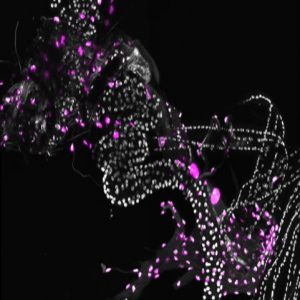
Cytoskeleton changes lying behind the transition of tracheal cells from a proliferative to a migratory program
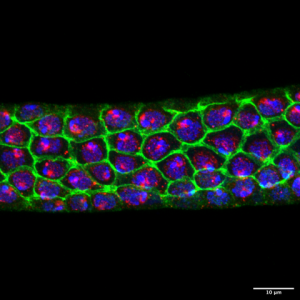
Generation of tools to visualize in vivo and manipulate gene expression specifically in the different populations of larval cells through metamorphosis
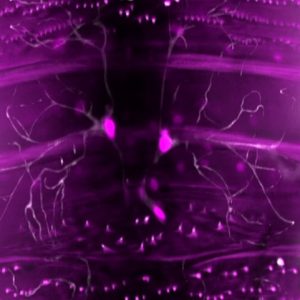
Deciphering, through the dissection of basic developmental processes in the Drosophila progenitor cells, mechanisms underlying human diseases.
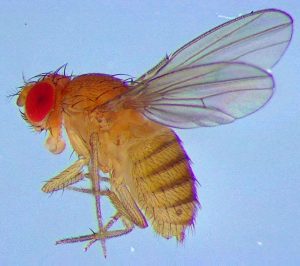
Lab people
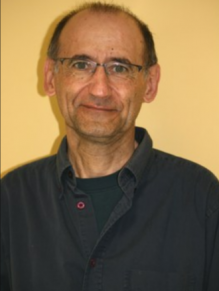
Jordi Casanova
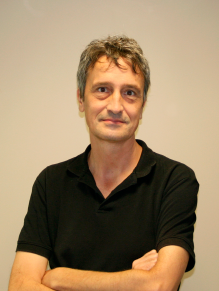
Marc Furriols
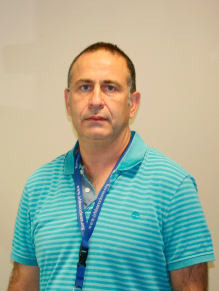
Nicolás Martín
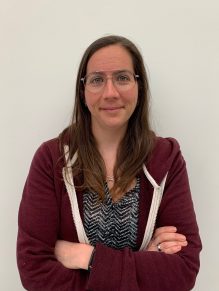
Natalia Plana
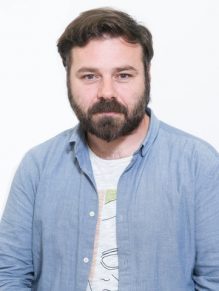
Panagiotis Giannios
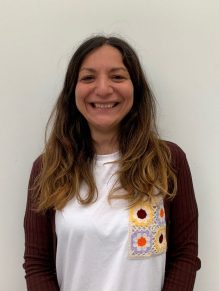
Delia Ricolo

Bitarka Bisai
Past students
Selected publications
Antagonistic role of the BTB-zinc finger transcription factors chinmo and broad-complex in the juvenile/pupal transition and in growth control.
Sílvia Chafino, Panagiotis Giannios, Jordi Casanova, David Martin & Xavier Franch-Marro. eLife 2023. DOI: 10.7554/eLife.84648
Control of hormone-driven organ disassembly by ECM remodeling and Yorkie-dependent apoptosis.
Fraire-Zamara, J.J., Tosi, S., Solon, J. and Jordi Casanova, J. Current Biology. 2021 DOI: 10.1016/j.cub.2021.09.057
Systemic and local effect of the Drosophila headcase gene and its role in stress protection of Adult Progenitor Cells.
Panagiotis Giannois & Jordia Casanova. PLOS Genetics (2021) DOI: 10.1371/journal.pgen.1009362
Collective cell migration and metastases inducedby an epithelial-to-mesenchymal transition in Drosophila intestinal tumors.
Campbell,K., Rossi, F., Adams, J., Pitsidianaki, I., Barriga, F., Garcia-Gerique, L., Batlle, E., Casanova, J. and Casali, A. Nature Communications (2019) DOI: 10.1038/s41467-019-10269-y
Holes in the Plasma Membrane Mimic Torso-Like Perforin in Torso Tyrosine Kinase Receptor Activation in the Drosophila Embryo.
Mineo, A., Fuentes, E., Furriols, M. and Casanova, J. Genetics (2018) DOI: 10.1534/genetics.118.301397
Biology, a science of grays.
Casanova, J. Embo Reports (2018) DOI: 10.15252/embr.201846332
Differential roles of the Drosophila EMT-inducing transcription factors Snail and Serpent in driving primary tumour growth.
Campbell K, Lebreton G, Franch-Marro X, Casanova J. PLoS Genetics (2018) DOI: 10.1371/journal.pgen.1007167
A common for framework for EMT and collective cell migration.
Campbell K, Casanova J. Development (2016) DOI: 10.1242/dev.139071
Genetic basis for the evolution of organ morphogenesis: the case of spalt and cut in the development of insect trachea.
de Miguel, C., Linsler,F., Casanova, J.* and Franch-Marro, X.*. Development (2016) DOI: 10.1242/dev.134924
A feedback mechanism converts individual cell features into a supracellular ECM structure in Drosophila trachea.
Öztürk-Çolak, A., Moussian, B., Araújo, S. and Casanova, J. eLife (2016) DOI: 10.7554/eLife.09373
Snoo and Dpp act as spatial and temporal regulators respectively of adult progenitor cells in the Drosophila trachea.
Djabrayan, N. and Casanova, J. PLOS Genetics (2016) DOI: 10.1371/journal.pgen.1005909
A role for E-Cadherin in ensuring cohesive migration of a heterogeneous population of non-epithelial cells
Campbell, K. and Casanova, J. Nature Communications (2015) DOI: 10.1038/ncomms8998
Iro/IRX transcription factors negatively regulate Dpp/TGF-β pathway activity during intestinal tumorigenesis
Martorell Ò, Barriga FM, Merlos-Suárez A, Stephan-Otto Attolini C, Casanova J, Batlle E, Sancho E and Casali A. Embo Reports (2014) DOI: 10.15252/embr.201438622
Specification of Differentiated Adult Progenitors via Inhibition of Endocycle Entry in the Drosophila Trachea.
Djabrayan NJ, Cruz J, de Miguel C, Franch-Marro X and Casanova J. Cell Reports (2014) DOI: 10.1016/j.celrep.2014.09.043
Specification of leading and trailing cell features during collective migration in the Drosophila trachea.
Lebreton G and Casanova J. Journal of Cell Science, (2014) DOI: 10.1242/jcs.142737
Stemness as a cell default state.
Casanova J. Embo Reports, (2012) DOI: 10.1038/embor.2012.47
All publications
Antagonistic role of the BTB-zinc finger transcription factors chinmo and broad-complex in the juvenile/pupal transition and in growth control.
Sílvia Chafino, Panagiotis Giannios, Jordi Casanova, David Martin & Xavier Franch-Marro. eLife 2023. DOI: 10.7554/eLife.84648
Control of hormone-driven organ disassembly by ECM remodeling and Yorkie-dependent apoptosis.
Fraire-Zamara, J.J., Tosi, S., Solon, J. and Jordi Casanova, J. Current Biology. 2021 DOI: 10.1016/j.cub.2021.09.057
Systemic and local effect of the Drosophila headcase gene and its role in stress protection of Adult Progenitor Cells.
Unravelling the distinct contribution of cell shape changes and cell intercalation to tissue morphogenesis: the case of the Drosophila trachea.
Casani S, Casanova J, Llimargas M. Open Biology (2020) DOI: 10.1098/rsob.200329
Collective cell migration and metastases inducedby an epithelial-to-mesenchymal transition in Drosophila intestinal tumors..
Campbell,K., Rossi, F., Adams, J., Pitsidianaki, I., Barriga, F., Garcia-Gerique, L., Batlle, E., Casanova, J. and Casali, A. Nature Communications (2019) DOI: 10.1038/s41467-019-10269-y
Up-regulation of TcE93 gene expression acts as the trigger for metamorphosis independently of the threshold size in the beetle Tribolium castaneum.
Chafino,S., Ureña,E., Casanova,J., Casacuberta,E., Franch-Marro,X. and Martín, D. Cell Reports. (2019) DOI: 10.1016/j.celrep.2019.03.094
Blimp-1 Mediates Tracheal Lumen Maturation in Drosophila melanogaster.
Öztürk-Çolak,A., Stephan-Otto Attolini, C., Casanova, J*. and Araújo, S.* Genetics (2018) DOI: 10.1534/genetics.118.301444
Holes in the Plasma Membrane Mimic Torso-Like Perforin in Torso Tyrosine Kinase Receptor Activation in the Drosophila Embryo.
Mineo, A., Fuentes, E., Furriols, M. and Casanova, J. Genetics (2018) DOI: 10.1534/genetics.118.301397
Biology, a science of grays.
Casanova, J. Embo Reports (2018) DOI: 10.15252/embr.201846332
Differential roles of the Drosophila EMT-inducing transcription factors Snail and Serpent in driving primary tumour growth.
Campbell K, Lebreton G, Franch-Marro X, Casanova J. PLoS Genetics (2018) DOI: 10.1371/journal.pgen.1007167
GATA factor genes in the Drosophila midgut embryo.
Hernández de Madrid B, Casanova J. PLoS One. (2018) DOI: 10.1371/journal.pone.0193612
Transfer of Dorsoventral and Terminal Information from the Ovary to the Embryo by a Common Group of Eggshell Proteins in Drosophila.
Mineo A, Furriols M, Casanova J. Genetics. (2017) DOI: 10.1534/genetics.116.197574
A common for framework for EMT and collective cell migration.
Campbell K, Casanova J. Development (2016) DOI: 10.1242/dev.139071
Centrosome amplification increases single-cell branching in post-mitotic cells.
Ricolo, D., Deligiannaki, M., Casanova, J. and Araújo, S. Current Biology (2016) DOI: 10.1016/j.cub.2016.08.020
Genetic basis for the evolution of organ morphogenesis: the case of spalt and cut in the development of insect trachea.
de Miguel, C., Linsler,F., Casanova, J.* and Franch-Marro, X.*. Development (2016) DOI: 10.1242/dev.134924
Tumorigenic properties of Drosophila epithelial cells mutant for lethal giant larvae.
Calleja, M., Morata, G. and Casanova, J. Developmental Dynamics (2016) DOI: 10.1002/dvdy.24420
A feedback mechanism converts individual cell features into a supracellular ECM structure in Drosophila trachea.
Öztürk-Çolak, A., Moussian, B., Araújo, S. and Casanova, J. eLife (2016) DOI: 10.7554/eLife.09373
Snoo and Dpp act as spatial and temporal regulators respectively of adult progenitor cells in the Drosophila trachea.
Djabrayan, N. and Casanova, J. PLOS Genetics (2016) DOI: 10.1371/journal.pgen.1005909
A role for E-Cadherin in ensuring cohesive migration of a heterogeneous population of non-epithelial cells
Campbell, K. and Casanova, J. Nature Communications (2015) DOI: 10.1038/ncomms8998
Ligand-binding and constitutive FGF receptors in single Drosophila tracheal cells. Implications for the role of FGF in collective migration.
Lebreton, G. Casanova, J. Developmental Dynamics (2015) DOI: 10.1002/dvdy.24345
Accumulation of the Drosophila Torso-like protein at the blastoderm plasma membrane suggests that it translocates from the eggshell.
Mineo A, Furriols M and Casanova J. Development (2015) DOI: 10.1242/dev.117630
Germline and somatic vitelline proteins colocalize in aggregates in the follicular epithelium of Drosophila ovaries.
Furriols M and Casanova J. Fly (2014) DOI: 10.4161/fly.29133
Development: a deep breath for endocrine organ evolution.
Grillo M, Casanova J and Averof M. Current Biology (2014) DOI: 10.1016/j.cub.2013.11.033
Iro/IRX transcription factors negatively regulate Dpp/TGF-β pathway activity during intestinal tumorigenesis.
Martorell Ò, Barriga FM, Merlos-Suárez A, Stephan-Otto Attolini C, Casanova J, Batlle E, Sancho E and Casali A. Embo Reports (2014) DOI: 10.15252/embr.201438622
Specification of Differentiated Adult Progenitors via Inhibition of Endocycle Entry in the Drosophila Trachea.
Djabrayan NJ, Cruz J, de Miguel C, Franch-Marro X and Casanova J. Cell Reports (2014) DOI: 10.1016/j.celrep.2014.09.043
Conserved mechanisms of tumorigenesis in the Drosophila adult midgut.
Martorell Ò, Merlos-Suárez A, Campbell K, Barriga FM, Christov CP, Miguel-Aliaga I, Batlle E, Casanova J and Casali A. PLoS One, (2014) DOI: 10.1371/journal.pone.0088413
Specification of leading and trailing cell features during collective migration in the Drosophila trachea.
Lebreton G and Casanova J. Journal of Cell Science, (2014) DOI: 10.1242/jcs.142737
Deadpan contributes to the robustness of the notch response.
Babaoğlan AB, Housden BE, Furriols M and Bray SJ. PLoS One, (2013) DOI: 10.1371/journal.pone.0075632
The making of a fusion branch in the Drosophila trachea.
Gervais L, Lebreton G and Casanova J. Developmental Biology, 362 (2), 187-93 (2012) DOI: 10.1016/j.ydbio.2011.11.018
Conserved and divergent elements in Torso RTK activation in Drosophila development.
Grillo M, Furriols M, de Miguel C, Franch-Marro X and Casanova J. Scientific Reports (2012) DOI: 10.1038/srep00762
Stemness as a cell default state.
Casanova J. Embo Reports, (2012) DOI: 10.1038/embor.2012.47
Torso RTK controls Capicua degradation by changing its subcellular localization.
Grimm O, Sanchez Zini V, Kim Y, Casanova J, Shvartsman SY and Wieschaus E. Development, (2012) DOI: 10.1242/dev.084327
Control of germline torso expression by the BTB/POZ domain protein pipsqueak is required for embryonic terminal patterning in Drosophila.
Grillo M, Furriols M, Casanova J and Luschnig S. Genetics, (2011) DOI: 10.1534/genetics.110.121624
The Drosophila homologue of SRF acts as a boosting mechanism to sustain FGF-induced terminal branching in the tracheal system.
Gervais L and Casanova J. Development (2011) DOI: 10.1242/dev.059188
Specific GATA factors act as conserved inducers of an endodermal-EMT.
Campbell K, Whissell G, Franch-Marro X, Batlle E and Casanova J. Developmental Cell, (2011) DOI: 10.1016/j.devcel.2011.10.005
Specification of Differentiated Adult Progenitors via Inhibition of Endocycle in the Drosophila trachea
Djabrayan NJ, Cruz J, de Miguel C, Franch-Marro X, Casanova J. Cell Reports, (2014) DOI: 10.1016/j.celrep.2014.09.043
Sequoia establishes tip-cell number in Drosophila trachea by regulating FGF levels.
Araújo SJ and Casanova J. Journal of Cell Science, (2011) DOI: 10.1242/jcs.085613
Self-induced patched receptor down-regulation modulates cell sensitivity to the hedgehog morphogen gradient.
Casali A. Science Signaling (2010) DOI: 10.1126/scisignal.2001059
A developmentally regulated two-step process generates a noncentrosomal microtubule network in Drosophila tracheal cells.
Brodu V, Baffet AD, Le Droguen PM, Casanova J* and Guichet A*. Developmental Cell, (2010) DOI: 10.1016/j.devcel.2010.03.015
Closca, a new gene required for both Torso RTK activation and vitelline membrane integrity. Germline proteins contribute to Drosophila eggshell composition.
Ventura G, Furriols M, Martín N, Barbosa V and Casanova J. Developmental Biology (2010) DOI: 10.1016/j.ydbio.2010.05.002
Apical constriction and invagination: a very self-reliant couple.
Llimargas M and Casanova J. Developmental Biology, (2010) DOI: 10.1016/j.ydbio.2010.05.498
Mesenchymal-to-epithelial transition of intercalating cells in Drosophila renal tubules depends on polarity cues from epithelial neighbours.
Campbell K, Casanova J and Skaer H. Mechanisms of Development (2010) DOI: 10.1016/j.mod.2010.04.002
In vivo coupling of cell elongation and lumen formation in a single cell.
Gervais L and Casanova J. Current Biology, (2010) DOI: 10.1016/j.cub.2009.12.043
A functional antagonism between the pgc germline repressor and torso in the development of somatic cells.
de Las Heras JM, Martinho RG, Lehmann R and Casanova J. Embo Reports (2009) DOI: 10.1038/embor.2009.128
Developmental biology. Return to the proliferative pool.
González-Reyes A and Casanova J. Science, (2008) DOI: 10.1126/science.1163623
Modulation of intracellular trafficking regulates cell intercalation in the Drosophila trachea.
Shaye DD, Casanova J* and Llimargas M*. Nature Cell Biology (2008) DOI: 10.1038/ncb1756
The emergence of shape: notions from the study of the Drosophila tracheal system.
Casanova J. Embo Reports (2007) DOI: 10.1038/sj.embor.7400942
Two distinct but convergent groups of cells trigger Torso receptor tyrosine kinase activation by independently expressing torso-like.
Furriols M, Ventura G and Casanova J. P Natl Acad Sci Usa (2007) DOI: 10.1073/pnas.0700991104
Tramtrack regulates different morphogenetic events during Drosophila tracheal development.
Araújo SJ, Cela C and Llimargas M. Development (2007) DOI: 10.1242/dev.007328
Spatially distinct downregulation of Capicua repression and tailless activation by the Torso RTK pathway in the Drosophila embryo.
de las Heras JM and Casanova J. Mechanisms of Development (2006) DOI: 10.1016/j.mod.2006.03.009
Association of tracheal placodes with leg primordia in Drosophila and implications for the origin of insect tracheal systems.
Franch-Marro X, Martín N, Averof M and Casanova J. Development, (2006) DOI: 10.1242/dev.02260
The RhoGAP crossveinless-c links trachealess and EGFR signaling to cell shape remodeling in Drosophila tracheal invagination.
Brodu V and Casanova J. Genes Development (2006) DOI: 10.1101%2Fgad.375706
Mummy/cystic encodes an enzyme required for chitin and glycan synthesis, involved in trachea, embryonic cuticle and CNS development–analysis of its role in Drosophila tracheal morphogenesis.
Araújo SJ, Aslam H, Tear G and Casanova J. Developmental Biology, (2005) DOI: 10.1016/j.ydbio.2005.09.031
Developmental evolution: torso–a story with different ends?.
Casanova J. Current Biology (2005) DOI: 10.1016/j.cub.2005.11.018
Lachesin is a component of a septate junction-based mechanism that controls tube size and epithelial integrity in the Drosophila tracheal system.
Llimargas M, Strigini M, Katidou M, Karagogeos D and Casanova J. Development, (2004) DOI: 10.1242/dev.00917
A noncoding RNA is required for the repression of RNApolII-dependent transcription in primordial germ cells.
Martinho RG, Kunwar PS, Casanova J and Lehmann R. Current Biology (2004) DOI: 10.1016/j.cub.2003.12.036
Drosophila DDP1, a multi KH-domain protein, contributes to centromeric silencing and chromosome segregation.
Huertas D, Cortés A, Casanova J and Azorín F. Current Biology (2004) DOI: 10.1016/j.cub.2004.09.024
In and out of Torso RTK signalling.
Furriols M and Casanova J. The EMBO Journal (2003) DOI: 10.1093/emboj/cdg224
Project funding
Título: Mecanismos de supervivencia y plasticidad de las células progenitoras adultas de Drosophila
Referencia: PID2021-123392NB-I00 Entidad financiadora: MCIN.
Fecha de inicio: 01/09/2022. Duración: 3 años. Cuantía de la subvención: 284.350€
Proyecto PID2021-123392NB-I00 financiado por:

This group is financially supported by:
- Ministerio de Educación y Ciencia (MEC – Spanish Ministry of Science & Education).
- Institute for Research in Biomedicine IRB Barcelona.
- l’AGAUR- Generalitat de Catalunya.
Vacancies/Jobs
Post Doctoral Positions are availables. If you are interested please send us your CV and cover letter: Jordi Casanova (jcrbmc@ibmb.csic.es).
Lab corner
Jordi Casanova’s group has Instagram!
Follow us on @labCasanova, comment, click like on the images that we publish, and share with us the life in Casanova’s lab!
Do not hesitate to contact us through DM if you have any questions or suggestions.

